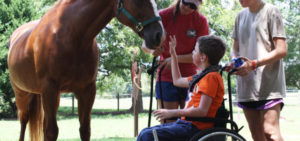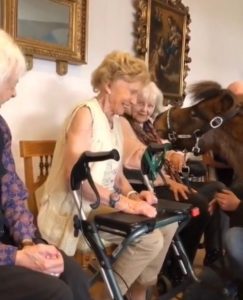History
Horses have been utilized as a therapeutic aid since the ancient Greeks used them for those people who had incurable illnesses. Its earliest recorded mention is in the writings of Hippocrates who discussed the therapeutic value of riding.
 The claimed benefits of therapeutic riding have been dated back to 17th century literature where it is documented that it was prescribed for gout, neurological disorder and low morale.
The claimed benefits of therapeutic riding have been dated back to 17th century literature where it is documented that it was prescribed for gout, neurological disorder and low morale.
In 1946 Equine Therapy was introduced in Scandinavia after an outbreak of poliomyelitis.
Equine-assisted therapy (EAT) encompasses a range of treatments that involve activities with horses and other animals to promote human physical and mental health.
The use of EAT has roots in antiquity, and EAT applies to physical health issues in modern form dates to the 1960s. Modern use of horses for mental health treatment dates to the 1990s.
Therapeutic horseback riding
Therapeutic riding is used by disabled individuals who ride horses to relax, and to develop muscle tone, coordination, confidence, and well-being.

 Therapeutic horseback riding is considered recreational therapy where an individual is taught by a non-therapist riding instructor how to actively control a horse while riding. It is used as exercise to improve sensory and motor skills for coordination, balance, and posture.Equine-assisted psychotherapy
Therapeutic horseback riding is considered recreational therapy where an individual is taught by a non-therapist riding instructor how to actively control a horse while riding. It is used as exercise to improve sensory and motor skills for coordination, balance, and posture.Equine-assisted psychotherapy
Equine-assisted psychotherapy
Equine-assisted psychotherapy (EAP) or Equine Facilitated Psychotherapy (EFP) is the use of equines to treat human psychological problems in and around an equestrian facility. It is not the same as therapeutic riding or hippo therapy.
Though different organizations may prefer one term over the other for various reasons, in practice, the two terms are used interchangeably.Other terms commonly used, especially in Canada, include Equine Facilitated Wellness (EFW), Equine Facilitated Counseling (EFC) and Equine Facilitated Mental Health.
